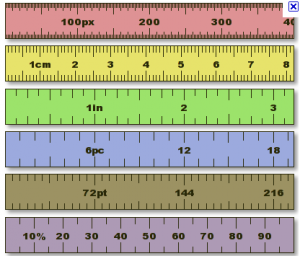Brands
How Big Should Your Blog Be? An Informal Formula
How long? How short? What’s the sweet spot when it comes to the length of your blog entries? 
Warning: The answer is not in this blog. The answer to the question is found through your own process. But there are some guidelines, a little math and a little strategy, that can help you judge what’s working and what’s not.
Make The Message
Your blog-entry length should be guided by the sheer number of words needed for effective examples— what’s hyperbolic and bad; what’s honest and better?
Let’s say you carve out 100–150 words per example. You’re looking at 500–750 words for the body of the entry, plus another 100–200 words for a snappy intro and the same amount for a killer last thought or idea to close out the piece (the kicker, in journalist-lingo) = approximately 700–1,150 words.
But if you are doing a something like a wrap-up, you might give 50–60 words per example. Intro and outro paragraphs included, this is more in the ballpark of a 400- to 600-worder, coming out to about half the size of the strategy think piece.
Is that OK, to have such different sized entries on the same blog? Yes – because the messages are completely different. One is a development of an argument, the other a round up of tools. Your readers don’t always need — and probably don’t want — over-elaborate justifications of your opinions.. If they didn’t trust you, they wouldn’t be reading you in the first place.
Go Long?
Glen Allsapp has done a lot of heaving lifting, when it comes to entry-length and effect, over at ViperChill. For example, he looked at Twitter users, and came up with a graph showing how the different lengths of 20 different posts at 10 different blogs affected Tweet-counts.
It turns out that the most Twitter activity stemmed from posts measuring some 1,100 words. Now, this doesn’t take into account the relative quality of writing across those 200 entries, and that certainly influences whether a reader passes a blog entry on to others, but, if we assume for a moment that they weren’t tweeting absolute dreck, it does suggest that Allsapp identified readers who were interested in sharing longer, more in-depth efforts.
This is not to suggest that you should switch over to only 1,000+ word entries. The Successful Blogging Facebook Team recently discussed long and short entries and among the ideas that emerged from that conversation: longer posts from known experts go over well, but shorter posts attract potential repeat visits to lesser-known bloggers by newer readers.
The Write Length
When you’re mapping out a blog entry, first run a little math. But also remember – you might not have access to the readers who want those extended entries, yet. If this is the case, build repeat visits with a punchy/pithy approach, and then work your way into vital/verbose territory over the span of several months.
But most importantly, write what you know, at the length you know how to write it. If it’s good, readers will come back, regardless of any formula.
Related articles
- How To Make Your Blog Posts As Shareable As Mashable’s (contently.com)
- 10 Tools For Converting Your Blog’s New Visitors Into Fans (contently.com)
- Why Focusing on Blog Word Count Is Stupid (hubspot.com)
- How to Never Run Out of Blog Post Ideas (contently.com)
Get better at your job right now.
Read our monthly newsletter to master content marketing. It’s made for marketers, creators, and everyone in between.




